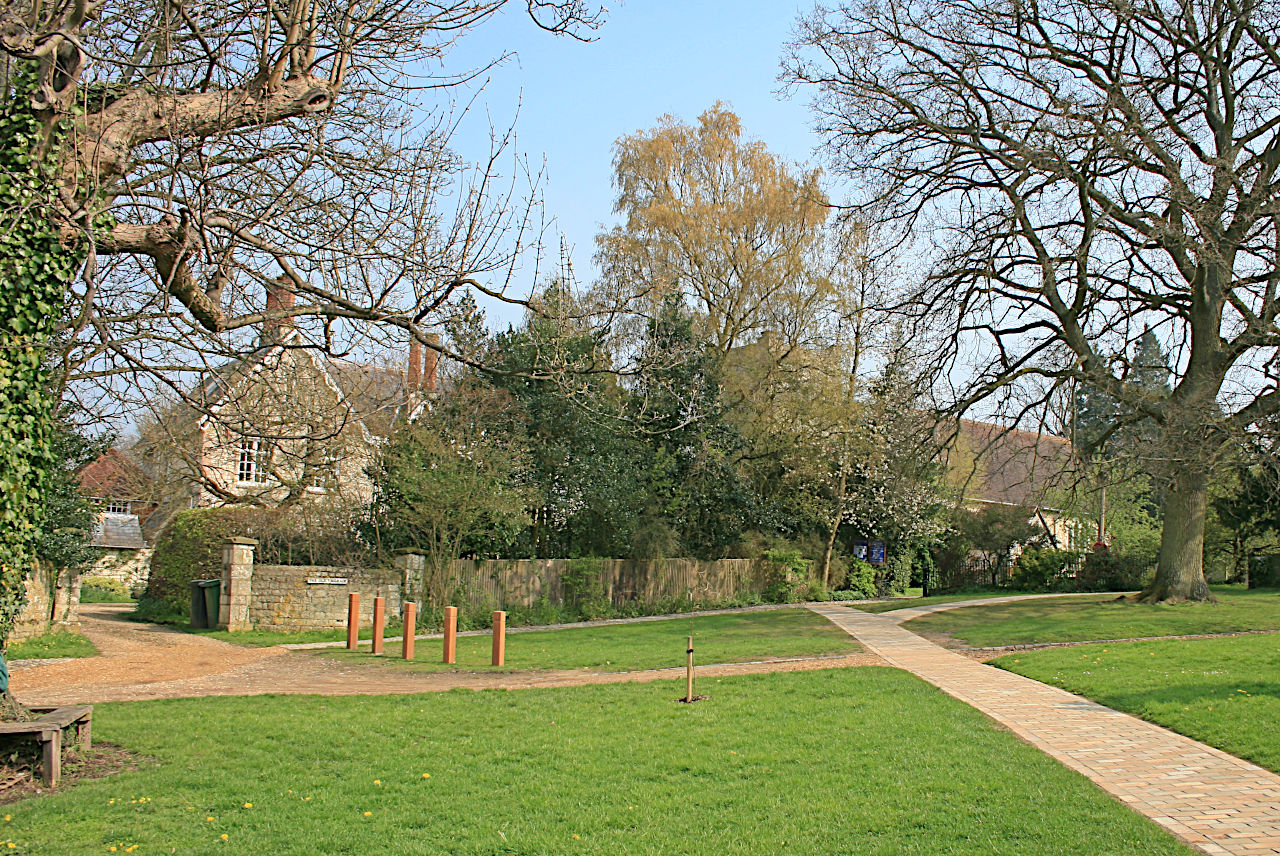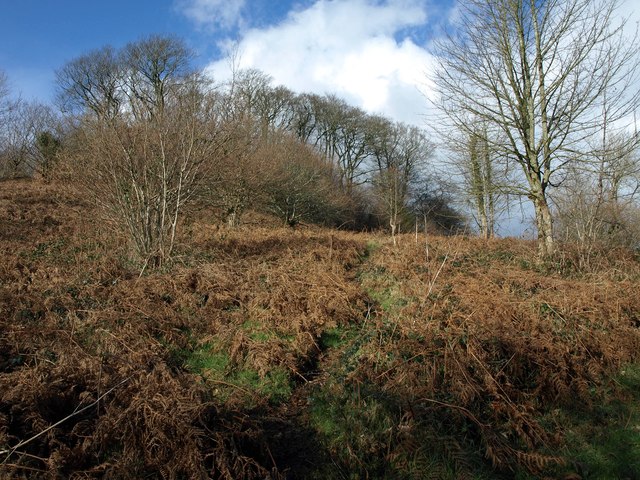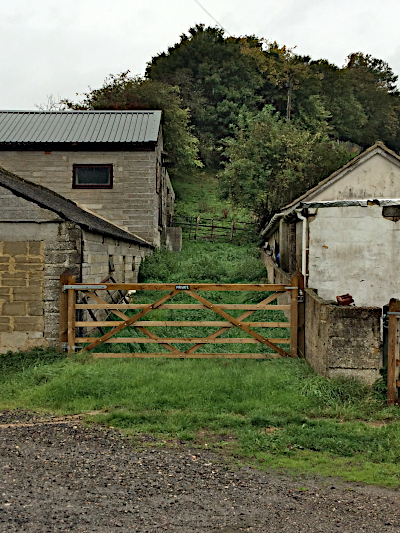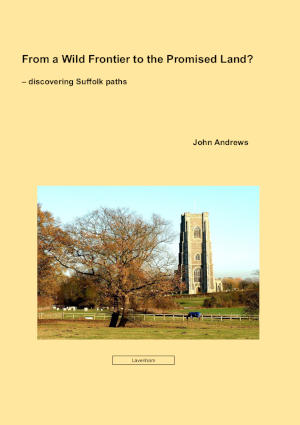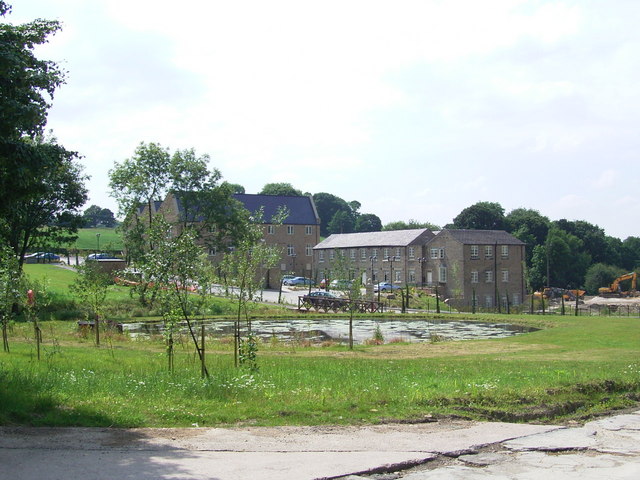
This article takes a look at powers to revoke or vary previously-confirmed public path orders. It was previously published in Waymark (2020, vol.34/3, p.6, the journal of and available to members of the Institute of Public Rights of Way and Access Management) and is reproduced here by kind permission of the editor. References to secondary legislation are to the position in England.
Introduction
Local authorities, in common with Ministers and some other public bodies, have powers to make legal provision under secondary legislation — whether by regulations, in byelaws, or by orders (such as in relation to public rights of way). From time to time, those who make this secondary legislation change their mind (or realise that they have made a mistake), and want to change what has been done. Fortunately, s.14 of the Interpretation Act 1978 provides, in relation to Acts of Parliament passed after 1978, that where an Act confers a power to make secondary legislation by statutory instrument, then, unless a contrary intention appears in the Act, a power is implied to amend or revoke any instrument previously made. This is hardly surprising. Unless Ministers are under a duty to make the instrument (so that it cannot be revoked without being replaced by another one), they are free to abolish what has been done, perhaps under a previous Government.
However, public path orders, whether made under the Highways Act 1980 or the Town and Country Planning Act 1990 (the ‘1980 Act’ and the ‘1990 Act’ respectively), are not made by statutory instrument. Section 14 of the Interpretation Act 1978 therefore does not apply. Yet both the 1980 and 1990 Acts confer express powers to revoke and vary such orders. For what purposes can those powers be used? There have been remarkably few orders relying on these powers, and very little consideration of their use. Highway Law (5th ed., Stephen Sauvain QC), is silent on the power; Rights of Way: A Guide to Law and Practice (4th ed., John Riddall and John Trevelyan), notes (para.7.2.11) that the ‘same procedures’ apply but contemplates the revocation of an order ‘re-creating the former path’.
Revocation and variation under the Highways Act 1980
Section 326(5) of the 1980 Act (as amended by the Countryside and Rights of Way Act 2000, Sch.6, Pt.I) states:
…an order to which this subsection applies confirmed by the Minister, or the Secretary of State, or confirmed as an unopposed order by the authority making it, may be revoked or varied by a subsequent order made or confirmed in the like manner and subject to the like provisions, except that an order confirmed in either way may be revoked or varied by an order confirmed in the other way.
This subsection applies to a public path creation order, a public path extinguishment order, a rail crossing extinguishment order, a special extinguishment order, a public path diversion order, a rail crossing diversion order, a special diversion order or an SSSI diversion order… .
This provision applies to all the familiar (and some not-so-familiar) public path orders which may be made under s.26 and ss.118 to 119D of the 1980 Act.
It’s worth looking at what this provision tells us.
The first requirement is that it is only possible to revoke or vary an order which has been confirmed. Thus it cannot be used to sweep away, or amend, a defective order which has not been confirmed precisely because of the defect. The order-making authority will have to resolve not to confirm such an order or, if there are objections, either ask the Secretary of State to modify the order, or if she is unwilling to do so, to refuse to confirm it.
The second is that the revocation or variation is done ‘by a subsequent order made or confirmed in the like manner and subject to the like provisions’. Thus the new order appears to be subject to the same process and requirements as the original order: it must be notified in the like manner and so on, and it is subject to the same tests for confirmation and so on. The only exception is that the new order may be confirmed by the order-making authority or the Secretary of State in the usual way, regardless of who confirmed the original order.
Thus there is no such thing as a ‘variation order’ or a ‘revocation order’: instead, there is a new public path order (most likely, a diversion order), which may include provisions to vary or revoke the original order. What might such an order be used for, and what would it look like?
It should be said that there are some things that very probably cannot be done. For example, to revoke an extinguishment order which has already been made and come into force. Why not? Because the effect of such an order, apparently to resurrect the stopped-up path, is so absurd it cannot have been contemplated by Parliament. There is provision in s.121(2) of the 1980 Act for compensation to the landowner whose land is crossed by the resurrected way. But whereas an order under s.118 can be made by the authority only if ‘it is expedient that the path or way should be stopped up on the ground that it is not needed for public use’, it is to my mind impossible to see how that test, or indeed the tests for confirmation in s.118(2), sensibly can be applied to an order which has precisely the opposite effect to that intended by the section. Such an order would also be open to criticism on the grounds that the public and affected landowners would not be alerted to what is done by a notice of an order entitled ‘public path extinguishment (revocation) order’.
And above all, there is a perfectly rational alternative: for the authority to make a public path creation agreement or order, either of which does provide for sensible criteria. This alternative also ensures that there is certainty about the public path which is created, in terms of alignment, width and limitations, whereas a revocation order merely would revive the uncertainties about the original path, perhaps ill-defined in the definitive map and statement. It is still further inconceivable that a way extinguished by, for example, a rail crossing extinguishment order (s.119A), might be revived by revocation of that order. How could such an order be made ‘in the interests of the safety of members of the public using’ the crossing? (It is conceivable that the railway might have ceased operating — in which case, the correct approach would be to consider diverting the path back to the original crossing point under s.119.)
And the same criticism must apply to varying an extinguishment order, whether the effect purports to extend the length of the extinguished way (why not make a further extinguishment order instead?) or resurrect part of some previously extinguished path (why not make a creation order instead?).
These constraints are not quite so acute in relation to a diversion order. Consider an order which seeks to revoke a previously made and confirmed diversion order, so that the line of the way reverts to its original line. The tests for making and confirming an order under s.119 sensibly can be applied to the new order. Subs.(4) arguably enables the new order to impose new limitations on the revived original way which were not originally present. But if such an order conceivably might be made, what would be the point? The same outcome could be achieved more rationally, and more overtly, by making a conventional s.119 order. It is hard to understand why an authority would wish to proceed down the revocation route. (It is still less likely that a case could be made for revoking a special diversion order, such as under s.119D for protection of sites of special scientific interest, unless perhaps the wildlife context had changed, and even then, a further order under s.119D would be more sensible, justified according to the usual tests.)
However, there are circumstances where revocation or variation might make more sense, and indeed, some orders have been made in just these circumstances.
The first is where an order contains a mistake or omission. For example, a diversion order may provide that the new way is to be aligned along the south side of a hedge, but the intention was that it should be on the north side. Undoubtedly, the order-making authority could make a further diversion order to achieve that outcome, but a diversion (variation) order would more obviously relate the modification to the defect in the original order, and focus interested parties’ minds on that context. Even so, the same tests would apply in either case: that the order effecting the modification must be in the interests of the landowner or the public, the proposed new (but originally intended) way will not be substantially less convenient to the public than where the way is now (rightly or wrongly), and so on. (However, in confirming an order to vary a previously-made diversion order so as to more precisely locate the new way, an inspector appeared to rely on no criteria for confirmation other than that there was an error in the original order plan: FPS/Z4718/4/32V, decision dated 8 June 2012.)
I find it more difficult to understand how an order could be made to vary the original diversion order in terms of width of the replacement way or to rectify omitted limitations on the new way. That is because s.119(1) provides that it must appear to the authority ‘expedient that the line of the path or way…should be diverted’, and variations of this kind do not amount to a diversion at all. Thus one is in the position of making a diversion order which does not divert anything. How does one apply the tests in s.119 to a diversion where the way is not relocated? Nonetheless, orders have been made for this purpose.
Could an extinguishment order be varied so as to correct a mistake in the original order? One could conceive of circumstances which might demand a variation. For example, if it emerges that the extinguished way accommodated statutory undertakers’ services for which no saving is conferred by the original order, and there is a likelihood that the services will require costly relocation in consequence. It might be said, why not vary the extinguishment order to confer a saving of the kind contemplated by s.121(5)? (And see art.2 of Form 3, public path extinguishment order, in Sch.1 to the Public Path Orders Regulations 1993 (SI 1993/11).) Perhaps so, but the difficulty is the one already adverted to above: how does one apply the tests for making and confirming an extinguishment order in s.118 to an order which stops up nothing, but serves only to make a variation of this kind?
The second set of circumstances where variation or revocation might be attractive is where an order has been confirmed but not yet taken full effect. Suppose that a landowner requests a diversion for land management purposes, the diversion order is made and in due course confirmed, the new way is legally effective (say) seven days after confirmation, and the old way is to be extinguished following certification of the new way as fit for use. The land changes hands, and the new owner prefers the original arrangements. But both the new way and the old way are now legally in existence (albeit the new way may not yet be capable of public use). (See s.119(3) of the 1980 Act, as substituted by Countryside and Rights of Way Act 2000, Sch.6, Pt.1, para.9(3), which provides that, where work requires to be done to bring the new site of the way into a fit condition for use by the public, the extinguishment of the original way is not to take place until the new way has been certified as fit.) A new diversion order cannot assist (because it cannot divert the new way back onto an original line which still subsists), and an extinguishment order would require to satisfy a different and arguably more demanding test. A diversion (variation) order could revoke the original order, and, as we have seen, would have to show that reverting the way back to its original line satisfies the usual statutory tests for diversion. That need not be an insuperable hurdle: it is conceivable that diverting a way might satisfy the tests in s.119, and that they might be satisfied again to move it back, even though the physical context remains unchanged. There would be no need to take account of the lingering existence of the old way itself, because the purpose of the order would be achieved not by diversion as such (which cannot be done in this context), but by revocation of the original order. This seems to me to be a legitimate use of the powers conferred by s.326(5).
It does not seem that the same approach could be used in relation to an extinguishment order which has been confirmed but which has not yet taken effect. That is, to revoke the extinguishment order before the way itself is actually stopped up. Not least because the landowner is unlikely to get cold feet about the extinguishment, such an order invariably takes effect at or soon after confirmation (leaving no time to proceed with an order of revocation), and, as we have seen, it is far from clear how such an order can be ‘made or confirmed in the like manner and subject to the like provisions’. How does it make sense to adopt the tests in s.118 to decide whether the revocation of the original order should be confirmed? It is tempting to reverse the statutory tests (that is, to determine whether the way is, after all, needed for public use), but that is not what s.326(5) calls for, and in any case, the original order was made on the basis that the way was not needed for public use.
Could orders be made revoking a combined creation and extinguishment order, whether before or after they have effect? Yes, in the sense that s.326(5) expressly includes power to revoke a creation order (as well as an extinguishment order). But this possibility also suffers from the disability that these orders too must satisfy tests which are not remotely appropriate.
The difficulty with this analysis is that it seems to leave no obvious role for an order revoking an extinguishment order. Yet s.326(5) expressly provides that an extinguishment order may be revoked or varied. However, it does so within the constraint that the subsequent order is ‘subject to the like provisions’, without explaining how those ‘like provisions’ ever might be satisfied. The words in s.326(5) first appeared in s.110(2) of the National Parks and Access to the Countryside Act 1949 and applied to any order made under Parts IV to VI of the Act, including orders applying the definitive map provisions to county boroughs, access orders, and orders designating National Parks and Areas of Outstanding Natural Beauty. When the public path order provisions alone were moved into the Highways Act 1959, the draughtsman used the same formula as in the 1949 Act, but restricted to the Minister the power to revoke or vary. The 1980 Act removed that restriction, but retained similar words. It is very likely that none of the Parliamentary draughtsmen has ever thought through how the power might be employed (still less tried to employ it) in the specific context of an extinguishment order; though it must be said that the courts will strive to give effect to Parliament’s words.
Revocation and variation under the Town and Country Planning Act 1990
The 1990 Act also makes provision for variation and revocation. S.333(7) says that:
…any power conferred by any of the provisions of this Act to make an order, shall include power to vary or revoke any such order by a subsequent order.
The language is somewhat terser, but the effect does not seem to be much different to s.326(5) of the 1980 Act. We probably may assume that an order may be varied or revoked by a subsequent order, regardless of whether the original were confirmed by the order making authority or the Secretary of State, although the relevant words, present in s.326(5) of the 1980 Act are absent from s.333(7) of the 1990 Act. Again, what is conferred is a power which is to be exercised ‘by a subsequent order’, that is, subsequent to the original. So it seems that a further order may be made under s.257 (or possibly under s.247, by an order made by the Secretary of State), but so as to ‘include power to vary or revoke’. This seems to require that the order exercising these powers must be one for ‘stopping up or diversion’ in the manner contemplated by s.257, including provision for any of the purposes in subs.(4); creation and extinguishment, diversion, improvement, undertaking of works and so on, and that what is done must be ‘necessary…in order to enable development to be carried out’ in accordance with planning permission.
Thus it is suggested that a s.257 order cannot simply revoke a previous extinguishment order if the development no longer calls for extinguishment of the way, or the development is not undertaken before the permission expires, because neither of the subs.(1) tests can be satisfied. That seems inconvenient and regrettable, because it would be obviously beneficial to revoke a s.257 diversion or extinguishment order once the intended development was off the agenda. However, an order revoking the original order is hardly necessary to enable development. As with an order under the 1980 Act, it is tempting to apply a reversal of the usual test in these circumstances: that an order revoking the original order is justified because the original diversion or extinguishment is no longer necessary to enable development; but that is not what is in s.257, nor does it seem to be called for by s.333(7).
A more favourable context might be where planning permission is granted for development on the assumption that a way is relocated and an existing highway is improved, following which new planning permission is granted which no longer calls for the changes originally contemplated but demands a different diversion. In that case, the new order made under s.257 might revoke the original and promote a different diversion starting from a ‘clean slate’: that would have the advantage that the commitment to highway improvements in the original order also would be rescinded. Given that the original order may not even have been brought into effect at the time of the new order, revocation of the original order works better than attempting to re-divert the way a second time.
Revocation and variation in regulations
There is a further difficulty in the way of making an order which revokes or varies another order, whether under the 1980 or 1990 Act. Regulation of the form of order makes no provision for these circumstances. The Public Path Orders Regulations 1993 (SI 1993/11, as amended) provide that an order under the 1980 Act ‘shall be in the appropriate form set out in Schedule 1…, or in a form substantially to the like effect’ (r.2(1), as substituted by SI 1995/451, r.4(a)). And the forms — Sch.1, form 1–3 (as substituted by SI 1995/451, r.4(b)) — needless to say, contain no provision for revocation or variation. But as the 1980 Act confers an express power to revoke or vary, it seems that the Secretary of State merely has overlooked the need to make regulatory provision for the exercise of that power, and amendment of the form of order so far as is necessary must be within the power of the order-making authority. The same principles apply to orders made under the 1990 Act under the Town and Country Planning (Public Path Orders) Regulations 1993 (SI 1993/10, as amended) although in this case, the regulations helpfully provide (r.2(1)) that the order must be as set out in Sch.1 ‘or in a form substantially to the like effect, with such modifications as may be required‘. Inserting an additional article to revoke or vary another order to give full effect to the order must be a ‘required’ modification.
The Wildlife and Countryside Act 1981 and ‘combined orders’
There seems to be no reason why an order revoking or varying a previously-made order should not include consequential provision modifying the definitive map and statement, in accordance with s.53A of the Wildlife and Countryside Act 1981, provided that the order satisfies the usual tests in s.53A(1). Such an order, being made under s.26 or ss.118 to 119D of the 1980 Act, and merely relying on the power in s.326(5) to revoke or vary, or likewise being made under s.257 of the 1990 Act relying on s.333(7), inevitably is within the classes of order prescribed by the Public Rights of Way (Combined Orders) (England) Regulations 2008 (SI 2008/442) And equally, there is no reason why such an order cannot revoke or vary, as may be necessary, provision in a previously-made order for the purposes of s.53A of the 1981 Act. S.53A(2) makes clear that such provision is part of the public path order (notwithstanding the expression ‘combined order’ used in the 2008 Regulations), and therefore it too must be susceptible to revocation or variation by a subsequently-made order.
Finally, it should be said that the Wildlife and Countryside Act 1981 confers no power of revocation or variation in relation to definitive map modification orders. The explanation must surely be that, if such an order is made in, or contains an, error, the answer is to make a further order to correct the error.
Conclusion
This article suggests that there is a limited but potent role in public path orders to revoke or vary previously-confirmed orders. Provision is more likely to be appropriate in relation to diversion orders, and it is hard to conceive of circumstances where it would be appropriate to revoke or vary an extinguishment order (and hard to conceive how to apply the tests to make and confirm an order for one of those purposes).
However, in the few instances where orders to revoke or vary have been made to date, it seems that these have usually been made to correct errors in a preceding diversion order. While such corrections may be within scope of the power to vary, the order made for that purpose should still be a diversion order, and should have the function of a diversion order. It is far from clear that an order which varies a previous diversion order, but does not alter the alignment of a way, can qualify as a diversion order at all. If that is correct (and the Planning Inspectorate does not yet seem to have published advice on revocation and variation), then the scope of what can be done by way of variation nevertheless is somewhat curtailed.

